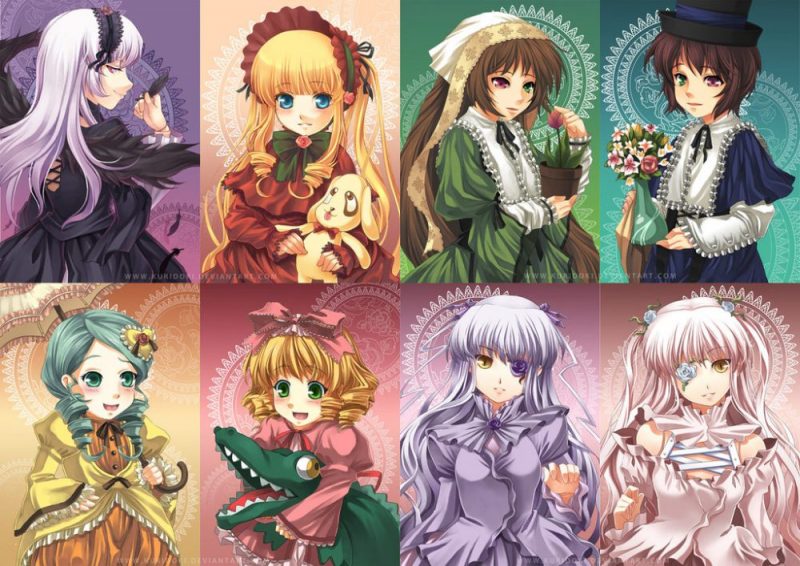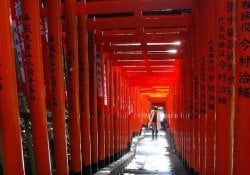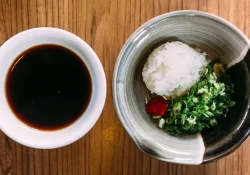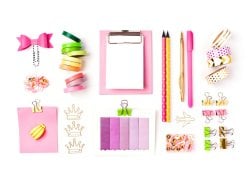Lolita fashion, a unique and captivating stylistic trend, emerged on the Japanese fashion scene during the 1990s and quickly won hearts around the world. With its roots in Victorian and Rococo aesthetics, Lolita fashion stands out for its elaborate silhouettes, intricate details and an atmosphere of innocence and elegance. This article explores the history, culture and different types of Lolita fashion, offering a comprehensive look at this fashion phenomenon that transcends geographic and cultural boundaries.
Throughout this article, we'll investigate how Lolita fashion has evolved over the decades, from its humble beginnings as a niche subculture to its current status as an influential force in the alternative fashion world. In addition, we will discuss Lolita culture and how it manifests itself through events, communities and dedicated publications.
It is worth noting that this article is part of a set of 3 articles where we explain in detail about the words Lolita, Lolicon and Loli. You can read the other articles on the links below:
Índice de Conteúdo
The meaning and origin of the word lolita
Lolita is a term that defines a Japanese style/fashion, where doll clothes are used, inspired by the Kawaii culture. These clothes sometimes involve nostalgia for other historical times and periods (Victorian or Rococo) or simply for childhood itself.
This fashion style is also divided into several different sub-styles and categories just like the gyaru which is another popular fashion style in Japan. Those who adhere to the lolita fashion can also be called a loli, but this word often literally refers to underage girls who are sexy.
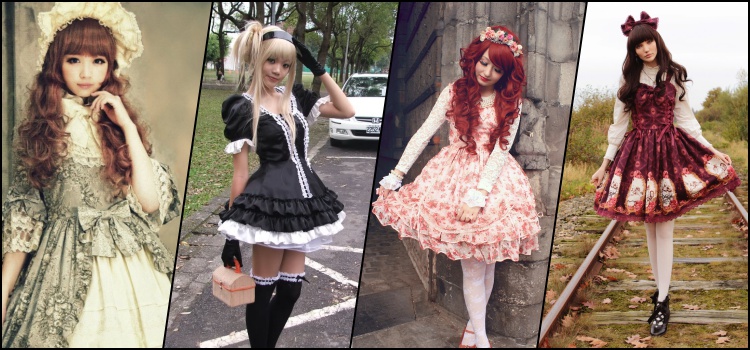
Lolita fashion originated quietly in the 1970s, but only became prominent in the 1990s. Lolitas are easily found on the streets of Japan, identified by their accessories, clothes and ways of acting. Nowadays this fashion has caught on even in the West. unfortunately the word lolita ends up creating an erroneous idea about the girls who adhere to this fashion.
This strange idea came about because lolita is a character in the book by Vladimir Nabokov. Although not the focus of the book, in them girls try to look younger than they are. Some claim that lolita is synonymous with nymphet, that is, a teenage girl turned to sex or awakening sexual desire.
Unfortunately, most Japanese and Western girls who adhere to the lolita fashion do so because they think it's cute. Many do not consider these clothes to be sexy, and are annoyed if someone thinks so. In fact, the clothes that lolitas usually wear are much more decent than the popular fashion.
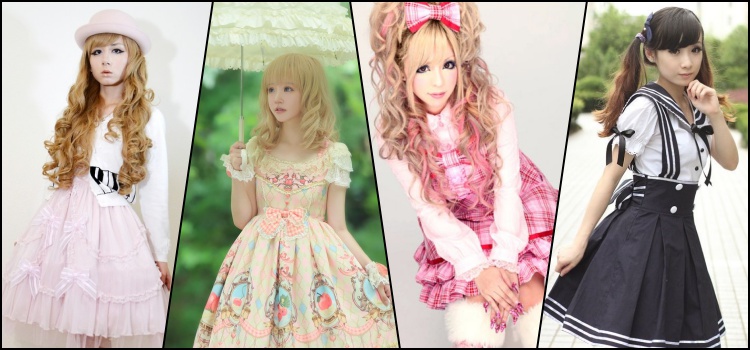
What is the difference between Lolita and Loli?
The main difference between "Lolita" and "Loli" is that "Lolita" is associated with Lolita fashion, a Japanese fashion style with Victorian and Rococo inspirations, while "Loli" is an abbreviation of "Lolicon" and refers to a genre In the Japanese media that involves characters young or young girls.
Loli mainly refers to characters who appear to be children in different ways, whether in appearance, size, personality or way of acting. It can involve clothing as well, but it's simply about the desire to look young.
The term Lolita simply refers to the style of fashion, clothing and culture and is more present in real life. There may be Loli in real life, but they are usually more frequent in anime, both can wear similar clothes, but the difference is noticeable.
If you want to know more differences, just read the other articles mentioned at the beginning of this page. Do not confuse Lolita with Loli, as Loli can be considered negative due to the sexualization of children, while Lolita is just a fashion style.
Getting to know Lolita culture
Lolita is a style and fashion, but it ends up going beyond clothes and involving a personality, that is, a culture. Of course, not all lolitas follow a childish personality, sticking only to fashion.
Although some people unknowingly find this style erotic or vulgar, loli follow a pattern of sizes and styles. Real Lolitas are always keeping the modesty and elegance of their clothes, also having the intention of looking childish in some models, with full skirts, always in the knee height, lace, bows and ruffles.
Loli often go to karaoke, have picnics, have regular tea gatherings, or go to coffee shops and bakeries.
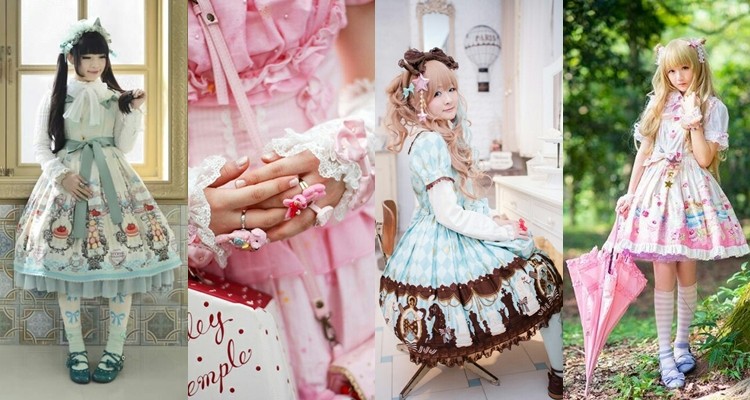
The article is still halfway through, but we recommend also reading:
The different types of lolita
There are several types of lolita styles and sub-styles, below we will see a short list summarizing each one of them:
lolita
Sweet, from the English "sweet", is the style "cute", which uses colors such as pink shades, pastel and sometimes brown or black. Always with cute motives, it is the style that most seeks inspiration in childhood, with its candy and animal prints.
Classical Lolita
– The classic style, reminiscent of the original Victorian and Rococo fashions. The colors used are aged tones. Brown and old rose are common, and the most popular motifs are floral prints.
Country Lolita
– It is a more “fresh” and modest style, generally used in hot seasons like summer, it brings straw hats and bags with lace and bows, prints and floral motifs, fruits or a delicate plaid, such as gingham.

Hime Lolita
– Style that most resembles the image of European princesses. Despite being very similar to Sweet Lolita, especially for the colors, it differs in the dress models, accessories (crowns, tiaras, pearls) and even the hairstyle.
Casual Lolita
– A style that wears the everyday and common clothes. For example: bell-shaped skirts, with lace, bows and ruffles and a baby look t-shirt with a cute print.
Shiro Lolita
Considered by some to be a subdivision of sweet lolita, where the clothes are only white, as shiro means white.
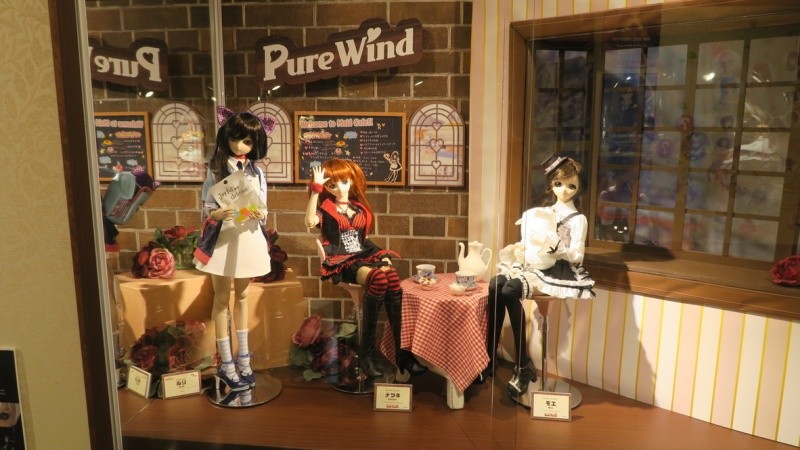
Dark Lolita Styles
See below some styles of Lolita more dark, gloomy and obscure:
Gothic Lolita
The mixture of "Gothic" with Lolita fashion. The colors used are dark and elegant, where obviously black predominates. Vibrant colors can give a vulgar air contrasted with black, so pale and sober colors are recommended.
Despite the inspiration of Gothic fashion, the makeup it should remain light and natural, without excess of black eyeshadow and very dark lipsticks.
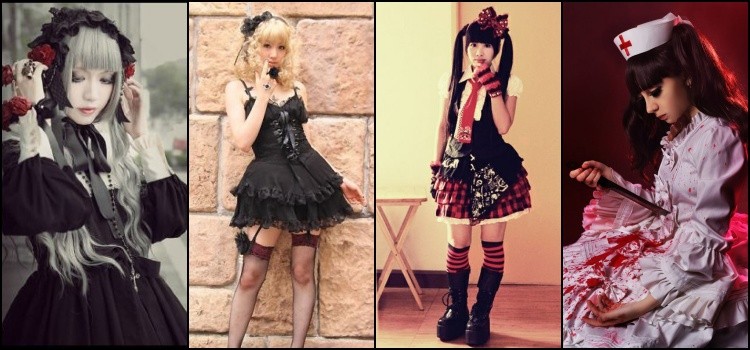
Kuro Lolita
Kuro Lolita is considered a subdivision of sweet lolita by some people, it is the opposite of Shiro Lolita, simply a loli dressed only in black.
Lolita Guro
Guru Lolita is a rather grotesque style where the loli who use bandages, fake blood and the like, which can give a broken doll look.
Punk Lolita
The mix of punk fashion and loli fashion. Overlays, checks and stripes are widely used. The most common accessories include skulls and perhaps spikes.
Lolita themed styles
Deco Lolita
– A mixture of Decora and Lolita style. Many varied and colorful accessories are used such as hair clips, huge bows on the head, wigs and colorful prints. Colors are usually pastel shades, and citrus, fluorescent, or very flashy colors are used extremely sparingly or avoided.
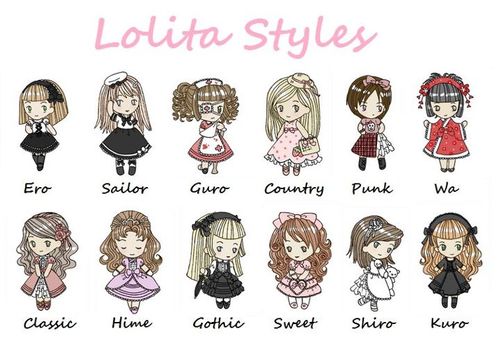
Ero Loli
– Despite the name, it is not made up of lingerie or very short skirts and se.xy outfits. This is because the rule for lolis involves being modest and elegant. So when they wear corsets, they always have a top underneath, and even if the necklines are deeper, they still don't reach the bust line. The skirt can be four or five fingers above the knee, but it's good to balance the amount of skin shown to not look vulgar.
Sailor Lolita
– It is a style that dresses with sailor clothes. This can include sailor necklaces and ties, sailor hats, and stripes. Not to be confused with the common Japanese “seifuku” or sailor-style school uniform.
Wa e Qi loli
– The first sub-style is based on the combination of Japanese accessories and traditional clothing, where the sleeves of the dresses and the collar are reminiscent of the kimonos and contrast with the voluminous skirt. Qi Lolita has practically the same concept, with the difference that the accessories and dresses are inspired by traditional Chinese clothing. Both are commonly used at events, not daily.
